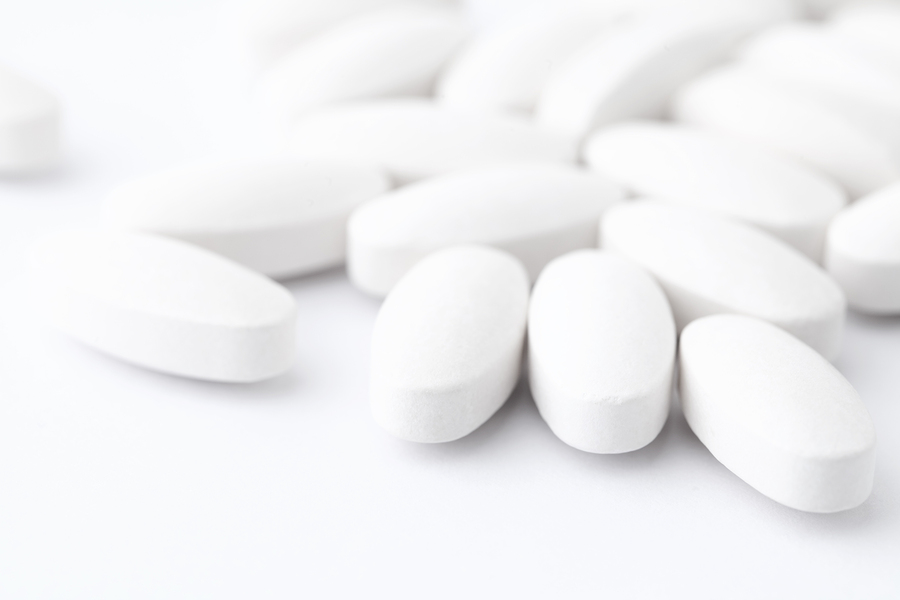 Developed in 1995, OxyContin – which contains the active ingredient oxycodone – is an opioid pain medication that, according to the Centre for Addiction and Mental Health, is time-released for individuals with moderate to severe chronic pain. The medication is a Schedule II controlled substance, meaning that it can only be obtained with a prescription and is considered to have a high risk for dependence.
Developed in 1995, OxyContin – which contains the active ingredient oxycodone – is an opioid pain medication that, according to the Centre for Addiction and Mental Health, is time-released for individuals with moderate to severe chronic pain. The medication is a Schedule II controlled substance, meaning that it can only be obtained with a prescription and is considered to have a high risk for dependence.
OxyContin is safe when taken as prescribed, but individuals who abuse it do so to experience a high from the oxycodone. They may crush and inject or snort, or even chew the tablets, so the medication is released at once. The desired effect may include pain relief, euphoria, and relaxation.
Other than the fact that OxyContin can become addictive when abused, individuals can experience many other negative side effects from taking the drug, including:
- Constipation
- Dry mouth
- Drowsiness
- Constricted pupils
- Difficulty with breathing
- Increased sensitivity to pain
- Hallucinations
- Rapid or irregular heart rate
When taken improperly, OxyContin affects the reward center of the brain by causing a flood of dopamine, the neurotransmitter linked to pleasure. Individuals who abuse OxyContin will also quickly build up a tolerance, meaning that they will need to take more of the drug to achieve the desired effect. This tolerance, as well as the impact on the brain’s reward center, causes individuals to become dependent on the drug.
Overdose
Some individuals choose to combine OxyContin with other drugs, not realizing that doing so can cause deadly consequences. Combining it with alcohol or other depressants can cause respiratory depression, which can lead to death. Combining it with stimulants, such as cocaine or prescription stimulants, can cause a stroke or heart attack.
Tolerances and dependence may also lead to an unintentional overdose. Overdoses can lead to death, so it’s important to act promptly and immediately call 911 if one is suspected. Signs of an OxyContin overdose include:
- Slow and difficult, shallow, or absent breathing
- Fainting
- Seizures
- Coma
- Drowsiness
- Pinpoint pupils
- Nausea
- Bluish tinge to fingernails and lips
Long-Term Effects
When OxyContin is abused, there are other negative effects that those close to the individual may notice. Individuals may begin to experience mood swings, including anger, depression, irritability, and hostility. Memory problems may develop, as well as damage to the liver and kidneys. Weight loss can occur, along with nausea and/or vomiting.
Individuals who abuse OxyContin for a long period of time may take extreme – and illegal – steps to obtain the medication. These steps can include doctor shopping, in which individuals visit different doctors to obtain prescriptions so they are not questioned; forging prescriptions; stealing OxyContin or stealing money to buy it illegally; and repeatedly visiting the emergency room for pain. Individuals may also isolate themselves from friends and family so their dependence and OxyContin abuse are not detected.
As with other substances, OxyContin abuse can affect virtually every part of an individual’s life. Those who abuse the medication may experience financial problems due to having to pay for the medication illegally. Their interpersonal relationships may begin to deteriorate. They may experience legal issues if they are arrested in connection to the illegal purchase – or sale of – OxyContin tablets.
Injecting OxyContin, after crushing the pills and mixing them with water, poses additional risks. Individuals may become infected, or infect others, with blood-borne diseases like HIV or hepatitis if they share needles. Some individuals who abuse prescription painkillers like OxyContin – around 75 percent as reported by the American Society of Addiction Medicine – may even switch to heroin, as it is a cheaper alternative.
The Benefits of a Detox Program

Withdrawal symptoms from OxyContin are physically uncomfortable, often likened to a really bad case of the flu, and emotionally intense. Depressed moods, sleep difficulties, and cravings can make it a difficult drug to stop “cold turkey.” A detox program can help to minimize the side effects of withdrawal with several different tools and techniques. Medical detox programs provide the highest level of care during withdrawal, as individuals generally remain on site in a medical detox facility for 5-10 days where vital signs can be closely monitored. This period of time is often referred to as “acute withdrawal,” and the bulk of withdrawal symptoms occur during this time.
Symptoms can be managed with both pharmacological tools and supportive measures during medical detox. To avoid shocking the body, OxyContin is not recommended to be stopped suddenly without professional help and supervision. Instead, the drug may be tapered off slowly under the watchful eye of trained medical treatment providers during detox.
Buprenorphine, methadone, and naltrexone are FDA-approved medications for the treatment of opioid dependence, and they are often used to replace other opioids during treatment, the National Institute on Drug Abuse (NIDA) publishes. Oxycodone is a short-acting opioid drug, and during detox, it is often helpful to replace it with longer-acting drug in order to wean a person slowly off opioids altogether. Methadone and buprenorphine are both longer-acting opioids used for this purpose. These drugs can be given at lower doses less often to counter withdrawal symptoms and cravings. Since they are still opioid agonists, they work on the same opioid receptors in the brain that OxyContin does to minimize withdrawal symptoms; as a result, they help to prevent relapse, or a return to drug use.
Buprenorphine is only a partial agonist, meaning that it has less abuse potential than methadone. Naltrexone is an opioid agonist that blocks opioids from binding to receptor sites, and it is generally reserved for later in a treatment program after all opioids have been flushed from the system in order to enhance abstinence.
Adjunct medications are often used on an off-label basis to treat opioid withdrawal and dependence. For instance, clonidine and lofexidine, which are typically used for controlling blood pressure, are commonly used to treat opioid withdrawal as they help to quell hyperactivity of autonomic central nervous system functions, the journal Expert Opinions in Pharmacotherapy publishes.
Medications can be helpful tools during detox to help a person become physically stable while allowing OxyContin to safely process out of the body. During this time, emotional support and encouragement as well as a stable and calming environment are incredibly beneficial. Healthy meals and set sleeping schedules aid in resetting a body that has been impacted by drug addiction. The main goal of detox is to help a person smoothly and safely reach a physical level of stability before entering into an addiction treatment program that can help to minimize relapse and enhance long-term recovery.
Can Abuse Be Prevented?
An article by Popular Science reports that in 2010, OxyContin tablets were changed in an attempt to make them harder to abuse. The makers formulated a tablet that is nearly impossible to crush or dissolve in water. When individuals attempt to crush the newer OxyContin tablets, they find that they are no longer able to crush them, and that it is impossible to mix the medication with water for injection, as it simply forms a gummy substance.
This change was in response to a large number of deaths linked to prescription opiate abuse. The Journal of the American Medical Association reports that in that year alone, there were 16,651 overdose deaths due to prescription opioid painkillers. The changes led to a decline in OxyContin abuse of almost 41 percent, according to a study published in the Journal of Pain for the American Pain Society. That being said, abuse of OxyContin still continues despite the new formulation as individuals still ingest large doses of the medication.
What Are the Steps to Recovery?
Addiction is a personal disease, and each individual’s personal circumstances and needs will make the recovery process fluid and complex. There are, however, some general steps that people take on the path to recovery. These include:
- Becoming aware of the role drugs have in the person’s life and taking steps to remove their presence: Awareness may come gradually over time, as a result of a crisis event, or due to an intervention. A medical detox program is then the next step to allow the body to process the drugs out safely.
- Entering a comprehensive addiction treatment program after detox: NIDA recommends spending at least 90 days in a residential or outpatient program in order to ensure a robust recovery. A comprehensive treatment program will provide behavioral therapy and counseling services, emotional support, life skills training, relapse prevention, stress coping tips, and more.
- Moving through a slow and easy transition from a structured treatment program to life back home: During this time, individuals should avoid potential triggers, high levels of stress, and unsupportive environments. Sober living homes can act as transitional environments between a formal and structured addiction treatment program and a full re-entrance into society. In these programs, individuals continue to attend therapy and support groups while slowly easing back into normal, everyday life and letting healthy habits become more ingrained.
- Participating in aftercare, educational, and relapse prevention programs: This participation should continue throughout early recovery. Individuals need to remain diligent and continue working on themselves during this often vulnerable time. While relapse is common, there are tools available to prevent and minimize it.
- Engaging in support groups and alumni services to enhance ongoing recovery: Active recovery requires ongoing vigilance and a commitment to remaining sober. Surrounding oneself with others who have similar goals and shared experiences can greatly help.
